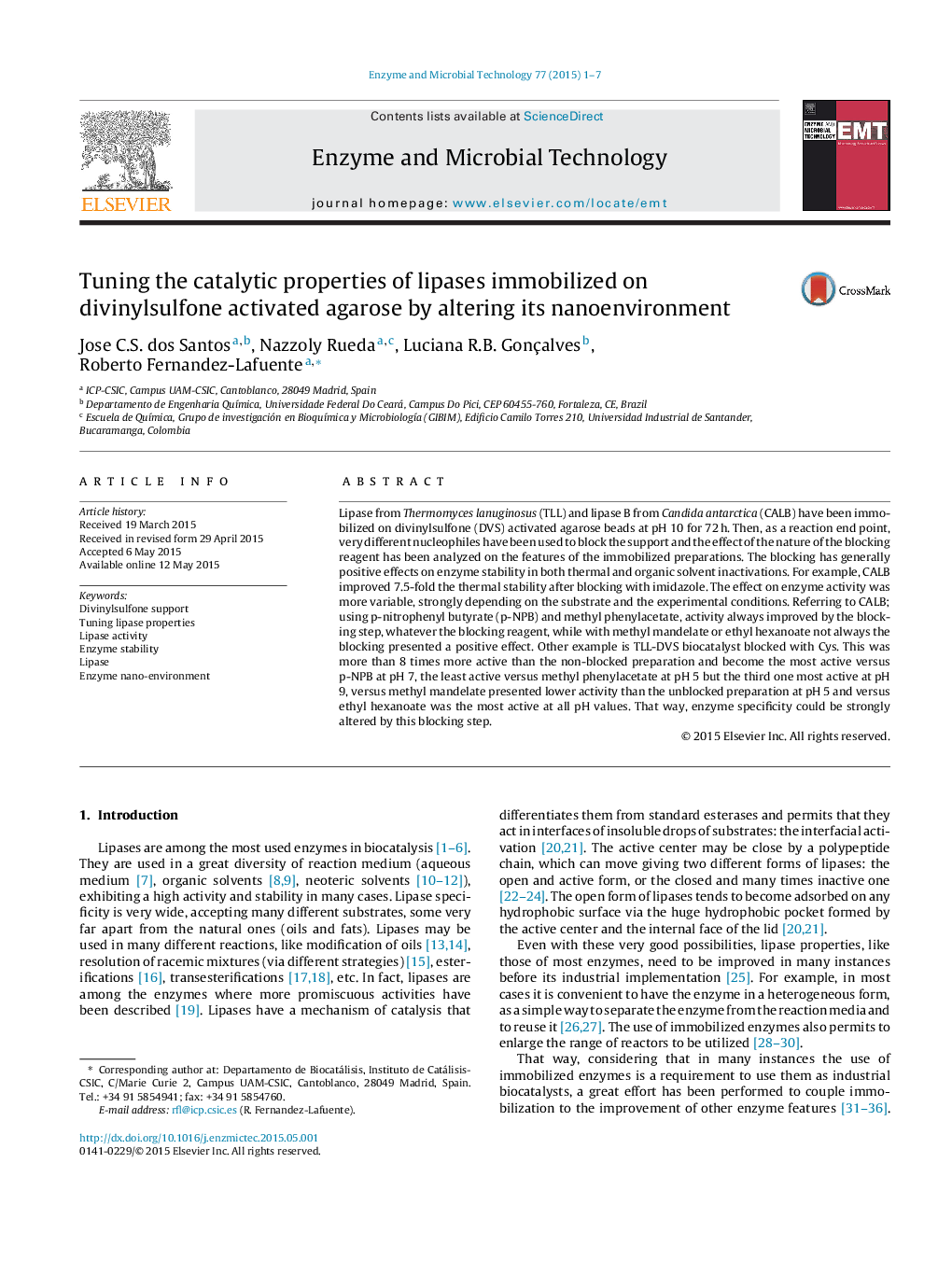| کد مقاله | کد نشریه | سال انتشار | مقاله انگلیسی | نسخه تمام متن |
|---|---|---|---|---|
| 16951 | 42626 | 2015 | 7 صفحه PDF | دانلود رایگان |
• TLL and CLAB have been immobilized exactly following the same protocol on DVS agarose.
• Both immobilized enzymes should have the same orientation and enzyme–support linkages.
• Different blocking of DVS immobilized TLL or CALB produced different catalytic properties.
• The best blocking depends on the variable analyzed and experimental conditions.
• The enzyme specificity is significantly altered depending on the operational conditions; there is not an optimal catalyst for all substrates and conditions.
Lipase from Thermomyces lanuginosus (TLL) and lipase B from Candida antarctica (CALB) have been immobilized on divinylsulfone (DVS) activated agarose beads at pH 10 for 72 h. Then, as a reaction end point, very different nucleophiles have been used to block the support and the effect of the nature of the blocking reagent has been analyzed on the features of the immobilized preparations. The blocking has generally positive effects on enzyme stability in both thermal and organic solvent inactivations. For example, CALB improved 7.5-fold the thermal stability after blocking with imidazole. The effect on enzyme activity was more variable, strongly depending on the substrate and the experimental conditions. Referring to CALB; using p-nitrophenyl butyrate (p-NPB) and methyl phenylacetate, activity always improved by the blocking step, whatever the blocking reagent, while with methyl mandelate or ethyl hexanoate not always the blocking presented a positive effect. Other example is TLL-DVS biocatalyst blocked with Cys. This was more than 8 times more active than the non-blocked preparation and become the most active versus p-NPB at pH 7, the least active versus methyl phenylacetate at pH 5 but the third one most active at pH 9, versus methyl mandelate presented lower activity than the unblocked preparation at pH 5 and versus ethyl hexanoate was the most active at all pH values. That way, enzyme specificity could be strongly altered by this blocking step.
Figure optionsDownload as PowerPoint slide
Journal: Enzyme and Microbial Technology - Volume 77, September 2015, Pages 1–7
